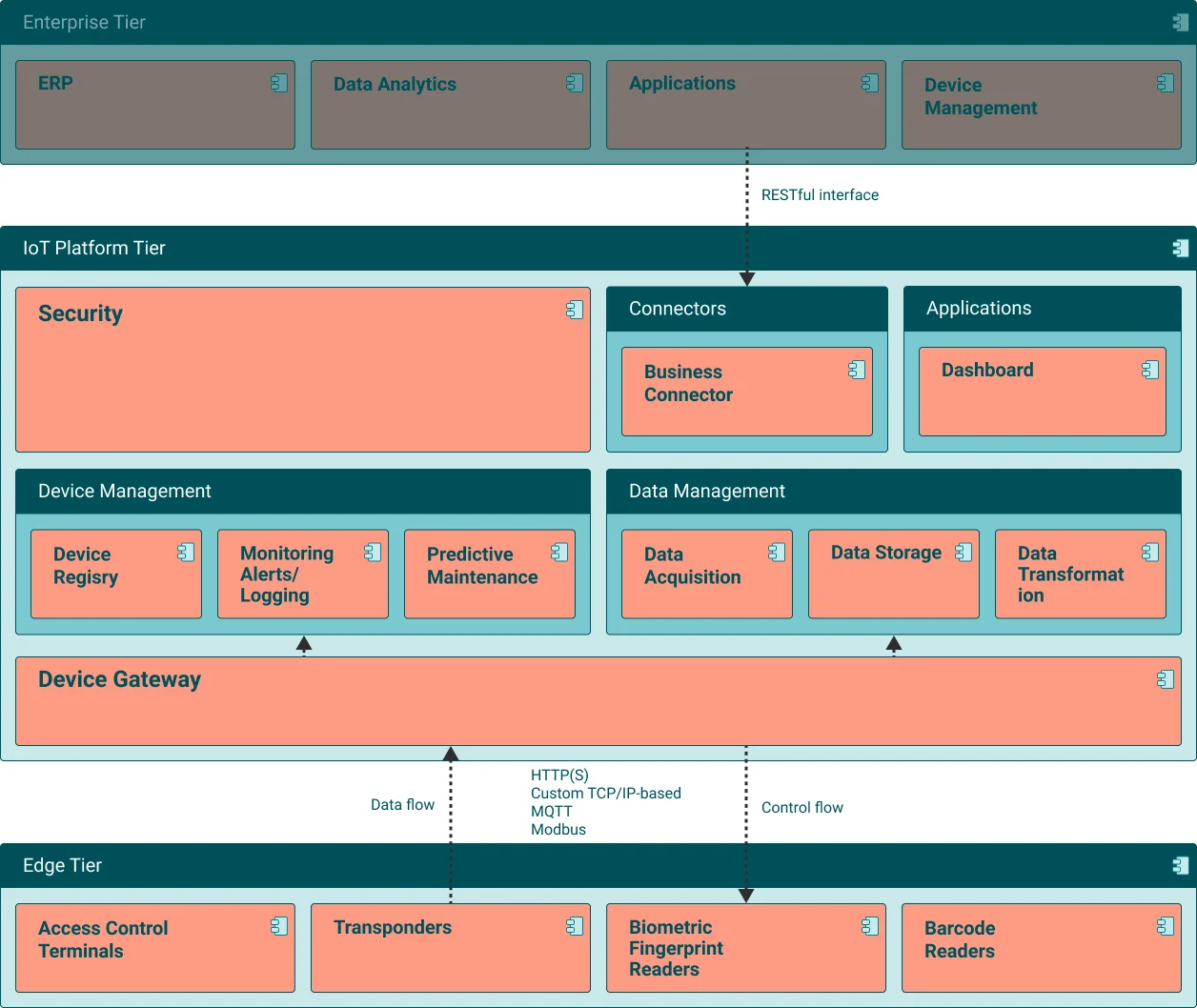Customer
Our customer is a hardware manufacturer specializing in devices for access control, time tracking, and data acquisition within industrial facilities. These devices are supplied to companies focused on creating solutions for building access control and personnel time tracking.
Challenge
Our customer aimed to develop an IoT platform capable of managing a vast array of edge devices. These edge devices encompass access control and data acquisition terminals equipped with RFID, transponders, barcode readers, biometric fingerprint readers, digital and analog inputs, GPS, and other functionalities. The IoT platform needed to offer the flexibility of cloud or on-premise installation, adaptable to small single-board computers like the Raspberry Pi based on the number of edge devices.
Our challenge involved crafting a module to oversee device management and monitoring, facilitate firmware updates, seamlessly integrate new edge devices into the IoT platform, and enable data logging for predictive maintenance techniques.
Solution
Engineers at Applied Systems devised the solution architecture and implemented a custom IoT platform module designed to control a wide array of edge devices. This solution minimizes the manual configuration effort for integrating new devices and isn't reliant on existing cloud service providers like Microsoft Azure IoT Suite or AWS IoT Platform.
Our developers advocated for a loosely coupled service-oriented architectural style with a web services implementation approach for the device management system. This approach was chosen to ensure scalability, including multi-cloud platform compatibility, and to reduce the cost of future extensions and maintenance.
Services are deployed as Docker images and instantiated as containers on target systems. This approach simplifies deployment across various environments and provides a straightforward, dependable method for updating the device management system on the client side.
Integration of IoT platform and enterprise system

Key Functions of the Developed Solution:
• Connectivity: New devices connect to the IoT system via IP-based protocols (HTTP(S), TCP/IP, MQTT, Modbus), supporting custom protocols.
• Scalability: The system effortlessly scales to accommodate the customer's desired number of devices.
• Data Transformation: Edge device-generated data can be automatically transformed to meet pre-configured format requirements.
• Data Storage: Utilizing relational and time-series database management systems, collected data is accessible via a RESTful API (ODATA protocol) on the customer's server.
• Data Analysis: An analyzer module searches for information in log data and prepares it for further processing, including predictive maintenance techniques.
• System Monitoring: Users can remotely monitor edge device and IoT platform performance.
• Maintenance: System operators can remotely update firmware to keep the system up-to-date.
• Connection Bandwidth: Device notifications and log messages are transmitted in real-time, ensuring prompt access requests and responses.
• Heterogeneity: The system supports open standards and can easily adapt to various system protocols, including Modbus, MQTT, and custom proprietary communication schemes.
• Deployment: The system is adaptable for installation in cloud storage or on-premise (local server, single-board PC) depending on device volume.
• Security: The solution incorporates device authentication, user authorization, data encryption, and event logging.
• Reliability: An offline operating mode enables the system to function even with intermittent connectivity.
Results
Our solution has successfully enabled the effortless integration of a wide array of edge devices with the IoT platform in a short timeframe. It ensures interoperability through both standard and custom protocols.
